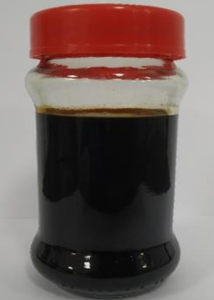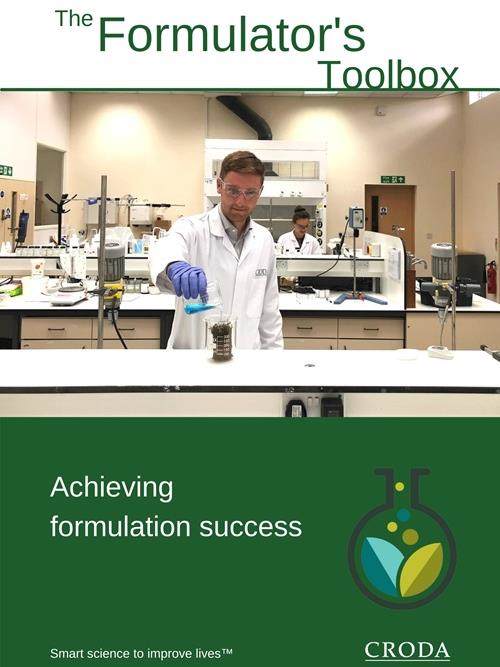Atlox™ CS 200: Multifunctional ingredient blend for pesticide capsule suspension (CS) formulations

Microencapsulation of pesticides – an excellent and sustainable formulation technology
Pesticides protect crops from pests and diseases thus improving the quantity and quality of the food production. However, pesticide applications can be lost instead of acting on the targets due to their instability caused by volatilisation, leaching, and degradation. This ineffective utilisation gives rise to repeated spraying of pesticides which increases the economic costs and exacerbates the environmental and health effects. In such cases, microencapsulation of pesticides has been proven to be an excellent and sustainable formulation technology which is used to prevent active ingredients degradation due to external factors, improve formulation efficacy through slow release, and reduce environmental pollution by avoiding excessive usage. It can also help in overall cost reduction and minimising farmers exposure to toxic active ingredients. Microcapsules refer to tiny containers with a core–shell structure, in which the core pesticide active moiety is encapsulated in the shell made of natural or synthetic polymer materials. The polymer shell can protect an active ingredient from surrounding influences and slowly release it into the environment over a specified period of time after spraying. Further these microcapsules are then dispersed and allowed to remain suspended in water / solvent mobile phase using specialised dispersing, and wetting agents.
The role of Atlox CS 200 in Pendimethalin CS formulations
Pendimethalin, a yellow coloured dinitroaniline group of herbicides, is sensitive to light and undergoes photolysis. This degradation can be worsened by an increase in temperature. Therefore, capsule suspension of Pendimethalin is recommended to reduce the degradation and enhance the efficacy through controlled release. The formulation, Pendimethalin 38.7% CS, is registered in India with Central Insecticides Board (CIB).
Croda recently introduced Atlox CS 200 which is unique, ready to use, and keeps the capsule suspended and stable on storage.

Commercial sample of Atlox CS 200
Features and benefits of Atlox CS 200
- A single blend of emulsifiers, wetting agent, dispersing agents, and protective colloidal material
- A low viscous liquid that is easy to handle on a commercial scale
- Robust stability at low to high temperature (5°C to 50°C)
- Targeted at formulating Pendimethalin CS formulations in water (solvent-free)
- Allows homogeneous capsule suspension and avoids crystal formations
- Helps to improve the formulation efficacy and limit active degradation
Quality specifications of Atlox CS 200
| Sr. No. | Specification parameter | Specification limits |
| 1 | Appearance (clarity) at 25°C | Clear, free from foreign matter |
| 2 | Appearance (colour) at 25°C |
Brown to dark brown |
| 3 | Appearance (form) at 25°C |
Slightly viscous liquid |
| 4 | pH (1% aq. solution) |
7.0 – 9.0 |
| 5 |
Density (g/ml) at 25°C |
1.05 – 1.25 |
| 6 | Viscosity (cPs, at 25°C, LVT S-63, RPM-60) |
<800 |
| 7 | Solid content by M/B(1 gm, @140°C) |
38– 44 |
Comparative analysis of lab batch and market samples
To analyse the performance of Atlox CS-200 it was incorporated into a Pendimethalin 38.7% CS formulation and compared to 2 market (solvent-free) samples.

Sample and microscopic images:
|
RT sample of Pendimethalin 38.7% CS with Atlox CS 200 |
Microscopic image of RT sample of Atlox CS 200 |
|
HST sample of Pendimethalin 38.7% CS with Atlox CS 200 |
Microscopic image of HST sample of Atlox CS 200 |
|
Market sample 1 at RT |
Microscopic image of market sample 1 |
|
Market sample 2 at RT |
Microscopic image of market sample 2 |
The comparison above indicates the superiority of CS formulations made using Atlox CS 200. Additionally, this process has been successfully demonstrated at commercial scale. For the formulations containing the market samples, crystals were seen under the microscopic images which can be directly related to low suspensibility and physical stability of the formulations which in turn will affect the field efficacy.
Conclusion
Utilising Atlox CS 200 in a Pendimethalin 38.7% CS formulation enable formulators to create a high-quality product within the industry. This can be achieved using standard equipment commonly found in agrochemical commercial plants, such as homogenisers. Consequently, formulators can enhance their sustainability objectives while also broadening their market presence in regions where regulatory limitations affect solvent-based formulations.
The Formulator's Toolbox (Full Version)









